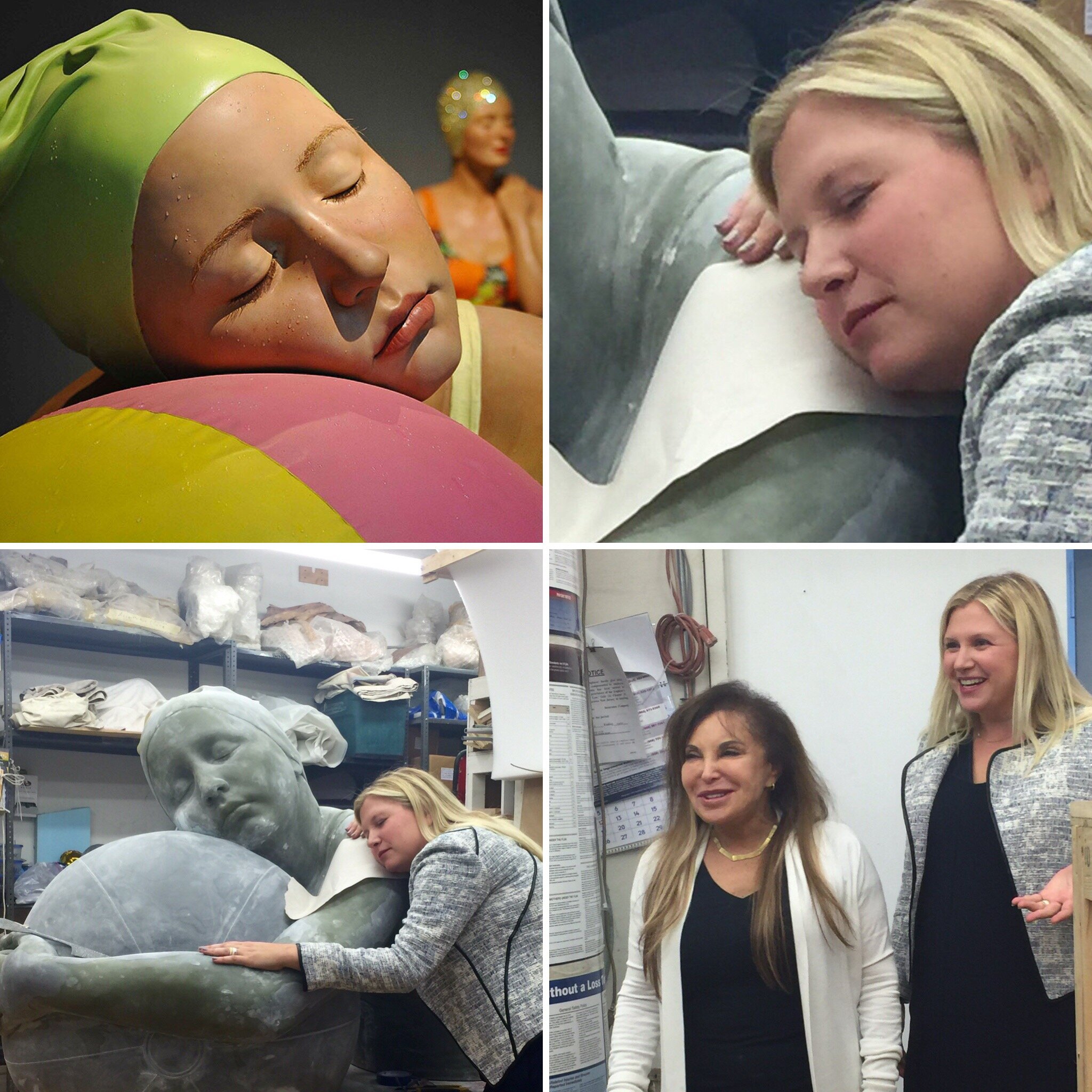The Real Brooke Posing With Her Sculpture in Monumental Size
Art is generally perceived as a way of detachment from the real-life, a key to revealing some invisible meaning in the world that surrounds us. Besides, it is not entirely true for all the genres of art like Hyperrealism, where the thin line between reality and art is virtually erased in sculptures and paintings these artists create. Numerous branches of realism are focused on producing artwork that resembles a real-life image; some out of them even go further and beyond.
Labelled as a significant advancement of Photorealism, the newly established style still contains some elusive differences from its predecessor. Also, the photorealists aimed to reproduce photographs as precisely as possible so the human eye could not differentiate between the original and the painting. At the same time, the Hyperrealists took the technique even further. They have developed ways of including charm narrative and emotion into the image. As the saying goes “Hyperrealism may create the atmosphere of surrealism as no one sees the world in such detail.”
Concisely known as Superrealism, the term Hyperrealism stood on the bases of the US photorealistic work of the late 1960s. Still, to create Hyperrealism, you must go over and above, past the current level, which is precisely what Hyperrealism artists did. So, how did it go? Did they stray beyond the line of art, where their work became a just an example of superb skill, or did they, blur the lines between art and reality, making way for a new hyper-artistic expression?
Difference Between Hyperrealism & Photorealism
The origin of the word Hyperrealism could be traced back to 1973 when the person named Isy Brachot fabricated for the first time as the title of a catalogue and exhibition at his gallery in Brussels. Besides, the exhibition involved influential artists like Richte, Gnoli and Delcol, but it was ruled by the American Photorealists such as Chuck Close, Ralph Goings, Don Eddy and Robert Bechtle. After the event, the term Hyperrealism was used by painters influenced by the Photorealists. Following the roots of Photorealism, the newly developed branch of realism managed to portray the images in an ultra-realistic manner. Besides, it was in contrast with the approach used in the traditional paintings of the late 20thcentury.
Also, Hyperrealism artists relied comprehensively on photographic pictures as a reference source. Still, they took it one step ahead, pointing to create a more detailed and definitive rendering, often containing a certain amount of narrative and emotion. Whereas Photorealists inclined to imitate the photograph, Hyperrealistic artists struggled to achieve a different pictorial design altogether. They achieve it by integrating an element that may not be there in reality. Besides, they intentionally entailed a softer and much more complex focus on the portrayed subject, creating an impression of a new reality not seen in the original photograph. Still far from being surreal, the portrayed illusions were captivating representations of reality, finely enhanced with a fresh layer of vision.
Conclusively, Hyperrealism offers an extremely effective means of exploring how we, as individual interact with ourselves, and with others from our everyday lives. For this specific reason, artists have the freedom to use Hyperrealism in portraying humans through an array of lenses ranging from the social, political to the psychological, aesthetical, external workings of the human mind and body.
